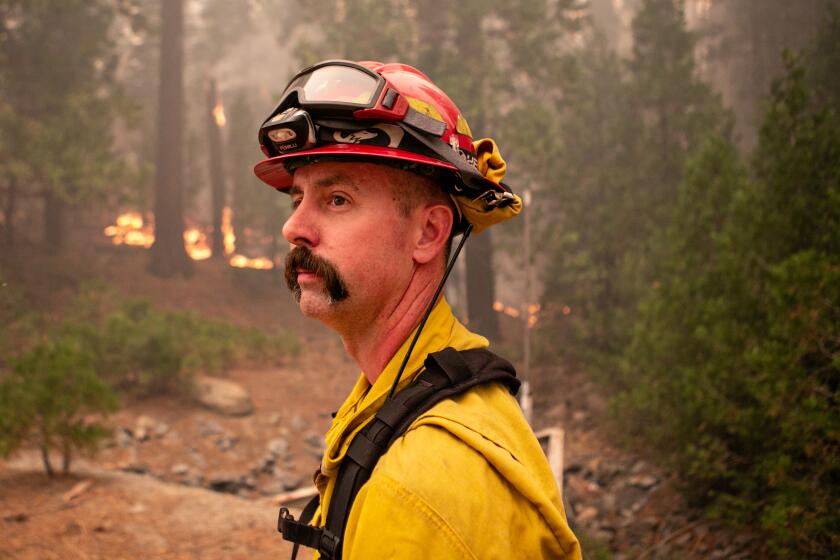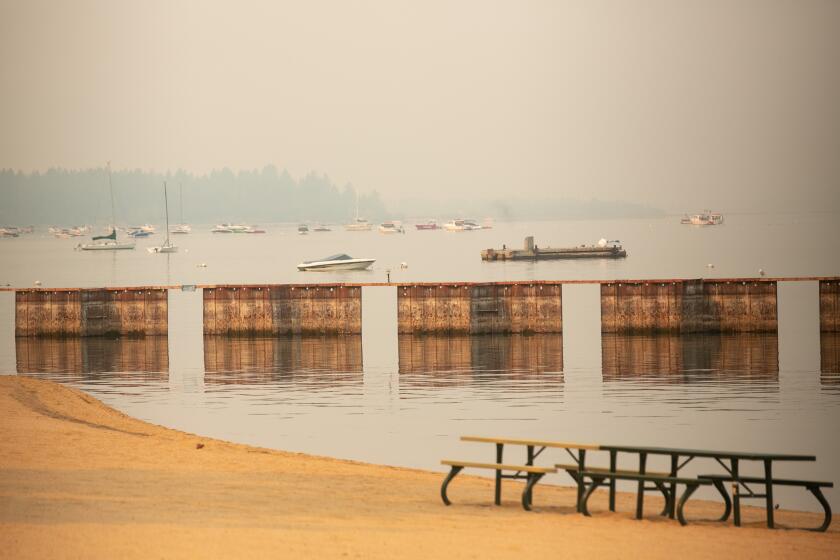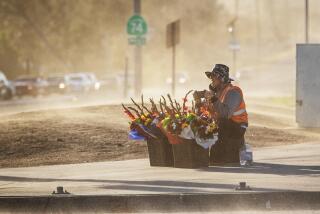Caldor fire crews remain in ‘pretty good firefight’ as they brace for red flag conditions
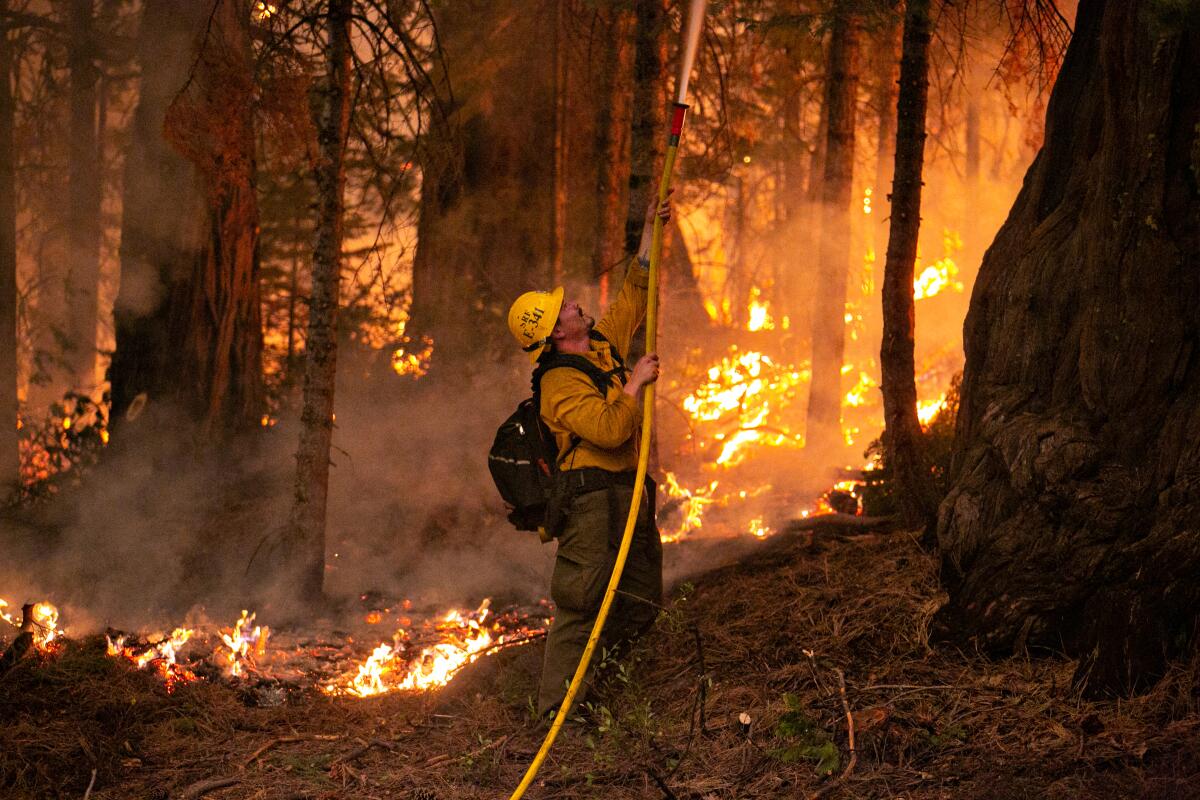
The Caldor fire made a strong push east on Sunday toward Lake Tahoe, spreading rapidly and spurring more evacuations as fire crews braced for the arrival of gusty winds and hot, dry conditions.
Evacuation orders were extended Sunday afternoon to include communities just south of South Lake Tahoe. All of the Lake Tahoe Basin in El Dorado County, from the California-Nevada state line on the lake’s southern end to Tahoma on its western shore, was under an evacuation warning by Sunday night.
The majority of growth and activity was on the fire’s northeastern edge, near the town of Strawberry and in the direction of the Lake Tahoe Basin, officials said. By Sunday afternoon, the fire had seared 168,387 acres and destroyed 472 homes. The fire was 19% contained Sunday morning, but the containment dropped to 13% by the afternoon.
Firefighters on Saturday made a substantial stand to protect Strawberry, including the historic Strawberry Lodge. Flames at one point were within feet of the town’s general store, but crews were able to keep them at bay by setting prescribed fires to burn fuel and attacking the blaze with fire hoses.
The raging Caldor fire was within striking distance of the historic lodge tucked along Highway 50 on Saturday.
But the biggest threat to the Tahoe Basin could be yet to come, as the National Weather Service has issued red flag warnings indicating gusty wind conditions in the area from 11 a.m. Monday to 11 p.m. Tuesday.
“We are expecting a big change in the weather pattern,” incident meteorologist Jim Dudley said during a briefing Saturday evening. “What will happen is that the winds that have been affecting the fire on the ground level … are going to be aided by southwesterly winds aloft. “
Officials said the winds will meet with hot, dry conditions to create elevated fire weather concerns. Gusts on Monday could be as strong as 35 mph.
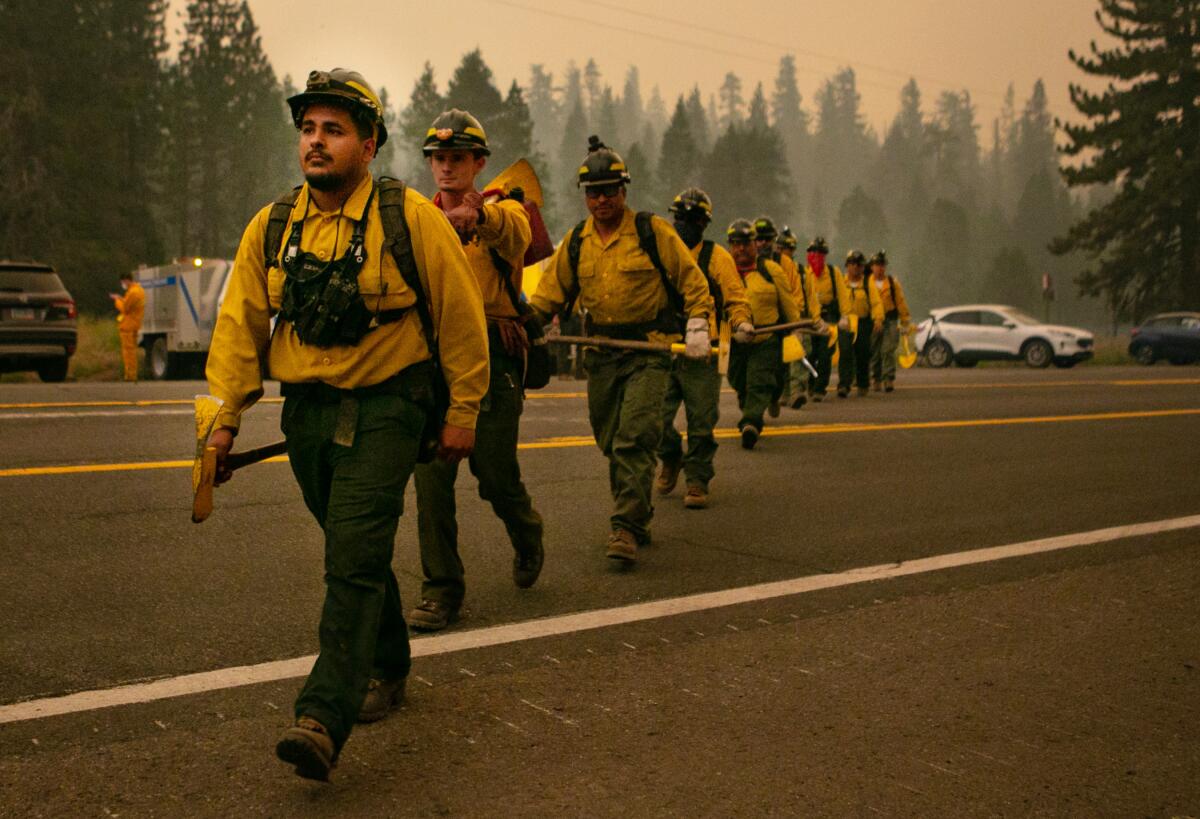
Crews on Sunday were working hard and fast to get ahead of the shift.
“We have one more day of fairly light winds across the fire, and then things change later Sunday night, Monday, and they will continue into Tuesday,” Dudley said.
On the front lines of battle to keep Caldor fire from hitting Lake Tahoe
Adding to the challenges is the area’s topography, which includes deep drainages and canyons that can act as funnels for the wind and flames, officials said.
“We have a saying: Where water flows, fire goes,” said fire behavior analyst Steven Volmer.
Volmer said the fire is spotting at distances as far as three-fourths of a mile, and the probability of those spots creating new fires is 90%. In the days to come, that probability will increase to 95%.
Winds have long been the X-factor in the state’s extreme fire behavior, officials said, so the forecast for the week could spell trouble for crews and for residents awaiting answers.
“We’ve had spotting occurring with these weaker winds,” said California Department of Forestry and Fire Protection public information officer Henry Herrera. “So once they reach those [higher] speeds, there is potential for increased spotting, and for the spotting distance to increase as well.”
As the destructive Caldor fire creeps closer to the popular resort area, the boaters, hikers and beach-goers who typically descend on South Lake Tahoe have all but vanished.
Residents in many areas near the fire are watching with concern and wondering whether or when it is time to take action.
In the Christmas Valley — the first part of the Tahoe Basin to be placed under a voluntary evacuation notice — resident Carol Bin, 61, moved her horses to nearby Gardnerville, Nev., last week. She said she was hunkering down with air purifiers to protect against the fire’s thick yellow-gray smoke while she waited to see what the blaze would do next.
A former Big Bear resident, Bin said she has faced evacuations before. She wasn’t eager to do it again.
“The hardest part is to pack,” she said. “Do I pack for a week? Or do I pack like I’m never coming back?”
More to Read
Start your day right
Sign up for Essential California for news, features and recommendations from the L.A. Times and beyond in your inbox six days a week.
You may occasionally receive promotional content from the Los Angeles Times.

